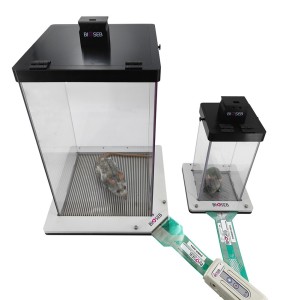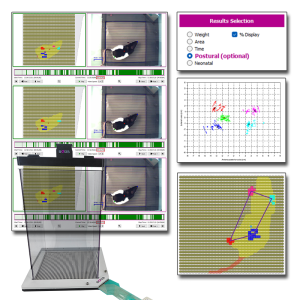Authors
Malek N, Mrugala M, Makuch W, Kolosowska N, Przewlocka B, Binkowski M, Czaja M, Morera E, Di Marzo V, Starowicz K.
Lab
Laboratory of Pain Pathophysiology, Institute of Pharmacology, Polish Academy of Sciences, Krakow, Poland
Journal
Pain
Abstract
The pharmacological inhibition of anandamide (AEA) hydrolysis by fatty acid amide hydrolase (FAAH) attenuates pain in animal models of osteoarthritis (OA) but has failed in clinical trials. This may have occurred because AEA also activates transient receptor potential vanilloid type 1 (TRPV1), which contributes to pain development. Therefore, we investigated the effectiveness of the dual FAAH-TRPV1 blocker OMDM-198 in an MIA-model of osteoarthritic pain. We first investigated the MIA-induced model of OA by (1) characterizing the pain phenotype and degenerative changes within the joint using X-ray microtomography and (2) evaluating nerve injury and inflammation marker (ATF-3 and IL-6) expression in the lumbar dorsal root ganglia of osteoarthritic rats and differences in gene and protein expression of the cannabinoid CB1 receptors FAAH and TRPV1. Furthermore, we compared OMDM-198 with compounds acting exclusively on FAAH or TRPV1. Osteoarthritis was accompanied by the fragmentation of bone microstructure and destroyed cartilage. An increase of the mRNA levels of ATF3 and IL-6 and an upregulation of AEA receptors and FAAH in the dorsal root ganglia were observed. OMDM-198 showed antihyperalgesic effects in the OA model, which were comparable with those of a selective TRPV1 antagonist, SB-366,791, and a selective FAAH inhibitor, URB-597. The effect of OMDM-198 was attenuated by the CB1 receptor antagonist, AM-251, and by the nonpungent TRPV1 agonist, olvanil, suggesting its action as an indirect CB1 agonist and TRPV1 antagonist. These results suggest an innovative strategy for the treatment of OA, which may yield more satisfactory results than those obtained so far with selective FAAH inhibitors in human OA.
BIOSEB Instruments Used
Dynamic Weight Bearing 2.0 (BIO-DWB-DUAL)
Source :

 Pain - Thermal Allodynia / Hyperalgesia
Pain - Thermal Allodynia / Hyperalgesia Pain - Spontaneous Pain - Postural Deficit
Pain - Spontaneous Pain - Postural Deficit Pain - Mechanical Allodynia / Hyperalgesia
Pain - Mechanical Allodynia / Hyperalgesia Learning/Memory - Attention - Addiction
Learning/Memory - Attention - Addiction Physiology & Respiratory Research
Physiology & Respiratory Research











![Dynamic Weight Bearing 2.0 – Postural Module [Add-on]](https://bioseb.com/733-home_default/dynamic-weight-bearing-20-add-on-postural-module.jpg)
























 Pain
Pain Central Nervous System (CNS)
Central Nervous System (CNS) Neurodegeneration
Neurodegeneration Sensory system
Sensory system Motor control
Motor control Mood Disorders
Mood Disorders Other disorders
Other disorders Muscular system
Muscular system Joints
Joints Metabolism
Metabolism Cross-disciplinary subjects
Cross-disciplinary subjects CONFERENCES & MEETINGS
CONFERENCES & MEETINGS 
